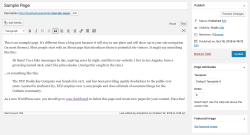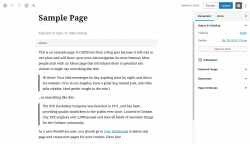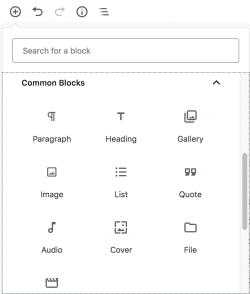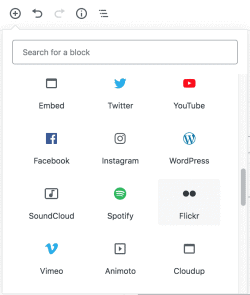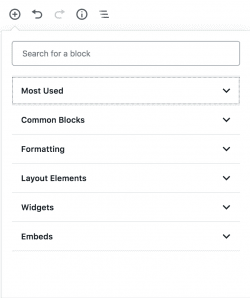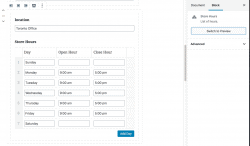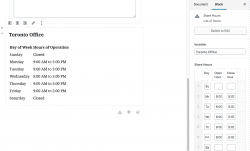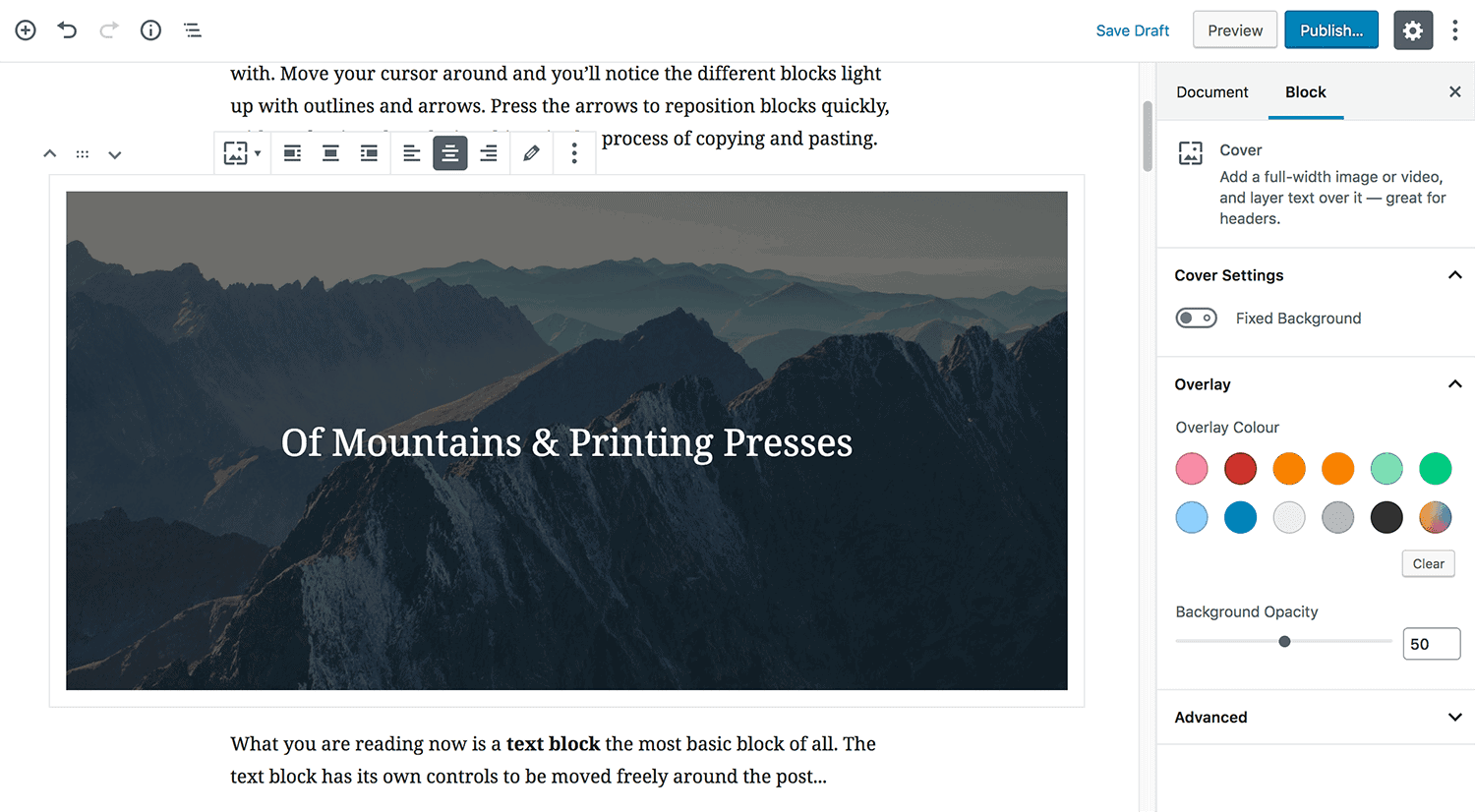Gutenberg, a new way to create in WordPress
November 1, 2018
If you have been using WordPress consistently for the last year or more, you would’ve already heard about Gutenberg, WordPress’ up and coming new editor, and replace the classic TinyMCE editor. But for those of you that don’t know, here are examples of the TinyMCE (a.k.a. the classic editor) and Gutenberg editor (a.k.a. the block editor) on a Sample Page.
- TinyMCE Editor (Classic Editor)
- Gutenberg Editor (New Blocks Editor)
I’ll admit, the new interface is nicely modernized, and the added functionality of controlling your content with independent blocks is a really good step forward for WordPress. However, the chatter among developers and users, in blogs and comment threads still show some concern.
TL:DR Gutenberg’s added control and new look are a definite plus to the Admin pages in WordPress, but in my opinion it is not ready to be activated on live sites just yet. We recommend that you install and activate the Classic Editor Plugin , double check the settings to ensure it will “Replace the Block editor with the Classic editor”. This way, you can still manage your site as per usual. Always make backups of your site prior to any updates you make to your site. Many of our clients’ sites use custom metaboxes as a means to provide wide customization in a prescribed way, so that pages load the way they were designed to. Gutenberg saves post information differently than the the way WordPress currently saves data using the classic editor. This is what we believe could potentially break a site that has been running on the original TinyMCE editor and then switches to Gutenberg at this time.
The most interesting feature in Gutenberg to site owners is likely the freedom where you can re-use template blocks portions of a page or post, by easily duplicating them and dragging and dropping within the page like a page builder. If you’re used to using plugins to embed videos and shortcodes, you don’t need to look any further than the ( + ) symbol to the left and add your next piece of meaningful content.
- Common Blocks are easily added
- Select to embed vairous content from 3rd party sources easily
- Numerous categories to organize the new blocks. Developers will be able to add more to this list
- Edit content in place with Custom Blocks (Here using and ACF repeater)
- Preview the block in place using the same ACF Repeater.
Unfortunately, it is reported that full accessibility will take longer than expected, as it may not have been alloted the time needed to fully test and find all issues to fix and comply with WCAG 2.0 AA standards. One recent report by Joe Dolson concluded saying:
The accessibility team will continue to work to support Gutenberg to the best of our ability. However, based on its current status, we cannot recommend that anybody who has a need for assistive technology allow it to be in use on any sites they need to use at this time.
For visual users though, you’ll have the ability to set a couple new widths to your content so that you can toggle control if you want something to be full width or stay within the prescribed container that existed before. You’ll also have a new side panel that displays your familiar document options like Categories, Page Attributes, etc. in a vertical accordion, along with a tab for block specific attribute options.
Although bugs are still being fixed and new bugs are being discovered, it’s not that Gutenberg isn’t a great product move forward for building WordPress sites, but it just doesn’t seem to be ready to be fully implemented. If you’re still wanting to try this new plugin on your site, make sure you have a backup of your database because Gutenberg stores your data differently, and when that happens, your site is more likely to break. Their reasoning behind saving the data differently is to make the operations in the code base simpler and localized. As a developer I can see the potential benefits of that, but when converting from an existing site, I haven’t seen a graceful solution yet.
When it comes to plugins and new version upgrades, always backup your site’s data. Make sure you research the plugin, their star rating and user reviews. Here at the office, we are very cautious about plugins that don’t meet our standard, conflict with other already installed plugins, have less than a few thousand installs and under a 4-star rating. You can see from the Gutenberg Plugin page, it isn’t just us that believe it’s not ready to be fully used.

